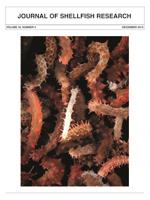Estimating age and maturity of the commercially harvested queen conch (Strombus gigas) offers fishery managers a unique challenge: How can these variables be determined if only the soft, edible parts of the marine gastropod are landed in port whereas the shells used for aging purposes are discarded at sea? Throughout the greater Caribbean region, including The Bahamas, the age and maturity of S. gigas are estimated by measuring the thickness of the flared lip of the shell. Given the traditional fishery practices for queen conch, including at-sea processing, developing proxy measures for S. gigas age and maturity would greatly benefit fishery managers. To this end, we used traditional morphometric analysis to find a significant inverse relationship between the ratio of operculum length to operculum width and shell lip thickness. A logistic regression model using the same operculum metric and a breakpoint of 15mmfor shell lip thickness as an indication of S. gigas maturity predicted correctly the maturity level for 86% of queen conch sampled in The Bahamas. This study provides the proof of principle for relationships between operculum measures and queen conch age and maturity that can be applied by fishery managers throughout the geographical range of the species.
How to translate text using browser tools
1 December 2013
Proxy Measures for Queen Conch (Strombus gigas linné, 1758) Age and Maturity: Relationships Between Shell Lip Thickness and Operculum Dimensions
Karl W. Mueller,
Allan W. Stoner
ACCESS THE FULL ARTICLE

Journal of Shellfish Research
Vol. 32 • No. 3
December 2013
Vol. 32 • No. 3
December 2013
age
Bahamas
gastropod fishery
maturity
opercula
queen conch
Strombus gigas




